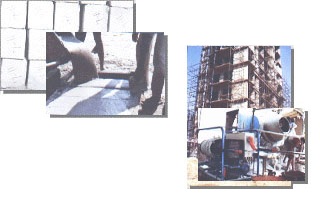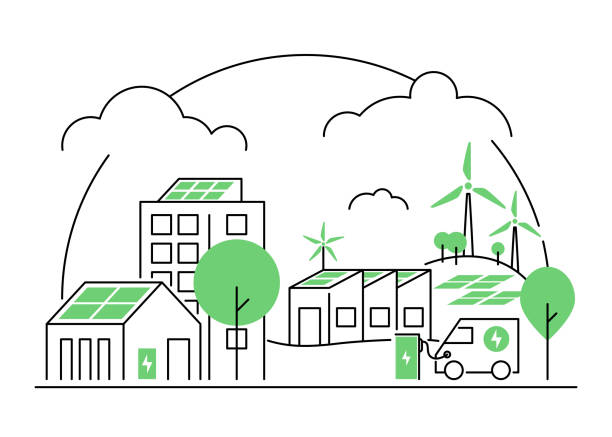| Open Prefab Systems & Small Building Components | ||
|
Open prefab systems based on an appropriate production level and small, easily to handle elements with rationalised production methods have attracted the attention of housing experts as an important option for arresting the rapidly rising escalation in the costs of material and labour. Building Centers in different regions of India have been instrumental in propagating several of these prefab systems at the grass-root level. Partial prefabrication can be usefully employed for practically every part of a building - foundations, walling systems, doors and windows, roofing systems, lintels and staircase elements. Costs of a roof being one of the major components of the construction outlay in any building project, one of the thrust areas has been the prefabrication of roofing elements. |
Partial Prefabrication
|
|
| Cellular Lightweight Concrete | ||
|
Cellular Lightweight Concrete (CLC) has been used in over 40 countries over the past 25 years to produce over hundred thousand houses and apartments, apart from schools, hospitals, industrial and commercial buildings. CLC is an air-cured lightweight concrete with flyash as a major ingredient, that can be produced at large project sites just like traditional concrete, utilising equipment and moulds normally used for traditional concreting. It is especially suitable in India for low-rise loadbearing constructions and for partitioning work in multistorey blocks. Benefits of CLC Blocks/Panels: 1. Tremendous weight reduction2. High thermal insulation 3. Optimal fire rating 4. Substantial material saving 5. No gravel used 6. Little cement 7. Less steel in structure and foundation 8. Easy and fast production 9. No primary energy and reduced transportation costs 10.Boon for remote areas with only sand availability. In view the use of flyash (33%) in CLC and this being a good substitute of ordinary clay bricks ( which use high energy and precious agricultural topsoil) the Govt. of India has given special import duty concessions for specialised equipment. |
 |
|
| The Abode Tradition in India | ||
|
Earth has always been the most widely used material for building in India and is a part of its culture. Traditionally, mud wall construction varies enormously with topography, climatic conditions and needs of different regions. The common methods used for earth construction are cob, wattle and daub, rammed earth, adobe and cut blocks. Approximately 55% of all Indian homes still use raw earth for walls. Interestingly enough, the limited load bearing capacity of earth is not a handicap for traditional builders. All traditional techniques are strong enough for the village builders' requirements. Beautiful examples can be found all over India. Even today, earth is extensively used as building material. Among other benefits of using earth for construction are its thermal insulation value, easy availability, and beauty. |
||
Sustainable Materials & Techniques
By and large, conventional building technologies like burnt bricks, steel and cement are high in cost, utilise large amount of non-renewable natural resources like energy, minerals, top-soil, forest cover etc. These increase dependence on external materials and manpower, harm the local economy and are generally polluting in nature.
The materials and technologies chosen for construction must, in addition to functional efficiency, fulfil some or more of the following criterion, for the cause of sustainability and a better quality environment:
Non endanger bio-reserves and be non-polluting
Be self-sustaining and promote self-reliance.
Recycle polluting waste into usable materials
Utilise locally available materials
Utilise local skills, manpower and management systems


